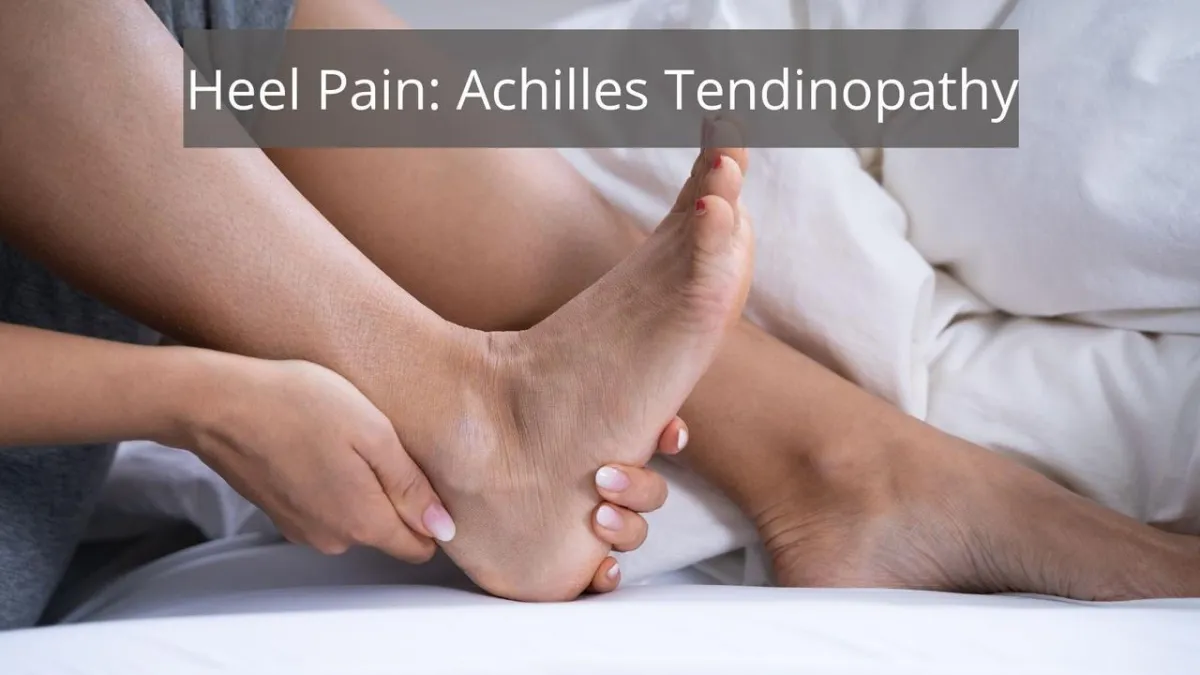Tips & Advice From South Dublin Podiatry

Heel Pain: Achilles Tendinopathy
What is Achilles Tendinopathy?
The Achilles tendon runs from the calf muscles and inserts onto the back of the heel bone. Although it is the largest tendon in the body measuring approximately 6cm in length, it is prone to overuse injury and degeneration. There is no good evidence that this condition is caused by inflammation, hence the term that we used to call it: 'achilles tendonitis' is not very accurate as it suggests inflammation in the area.
INTERESTING FACT: Tendinopathy does not improve with rest – the pain may settle but returning to activity is often painful again because rest does nothing to increase the tolerance of the tendon to load.
There are two types of achilles tendinopathy based on the area of injury:
Insertional Achilles Tendinopathy: this involves the lower part of the tendon and it occurs directly at the site of insertion onto the heel bone. This type usually occurs due to years of overuse. However, it can occur at any time and can also occur in patients who aren’t active.
Non-Insertional Achilles Tendinopathy: this occurs about 2-6cm above the insertion of the tendon and it involves the middle portion of the tendon. The fibres in the tendon begin to break down, degenerate and swell.
Causes
This condition usually occurs due to repetitive stress to the tendon over time. It can also arise if there is any sudden increase in the amount of running intensity or exercise. Having tight calf muscles may cause a strain on the tendon. Also, a bone spur, which is an extra growth on bone on the heel bone where the tendon inserts, can rub on the tendon and cause inflammation and pain.
Some people even get achilles tendon pain when walking!
Symptoms
Swelling along the tendon or at the back of the heel bone
Pain in the middle of the tendon (non-insertional tendonitis)
Pain at the back of your heel (insertional tendonitis)
Limited range of motion at the ankle, especially flexion of the ankle
Treatment and prevention
You'll always hear me talking about prevention as it's much better to prevent an injury than to treat it. Athletes should carry out a stretching programme to properly warm up the muscles before any physical exercise. When doing changes to your training, make sure those are gradual. Eg. Increase your mileage gradually over time, if you change your runners go for a shorter walk/ run for the first few times. You might be surprised but even the terrain that you run or walk on will have a direct impact on your tendons eg. running uphill/ downhill will be very different to running on a straight road. Bottom line is, tendons hate change. So we need to make the change as gradual as possible to strengthen the tendons and muscles as to prevent any injury down the line.
Once injury occurs, icing the area can help to relieve some inflammation initially. The area should be iced for 20 minutes with a break halfway through. Ice should not be directly applied to the skin. This can be avoided by wrapping the ice in a towel.
A podiatrist can issue a heel raise to help relieve the pressure being placed on the tendon.
Heel pain insoles or orthotic devices can be used to control excess motion, support the arch of the foot, and reduce stress on the Achilles tendon.
Heel pain exercises like stretches for the calf muscles and hamstrings may be issued to help stretch out the muscles and help relieve strain on the Achilles’ tendon.
NOTE: Because we have two different types of achilles tendinopathy: insertional and non-insertional, the way we treat these two conditions will be different. While non-insertional AT will get better with stretches, insertional AT might actually get worse so you'd want to avoid those for a while, especially at the beginning.
Want to see us in person?
Don't put off getting achilles tendon pain treatment and get fast relief.
Our practice is a modern centre which provides expert care, diagnosis and treatment of foot and ankle pain and problems for children, adults, and seniors. A detailed consultation with our friendly podiatrist will enrich you with a great knowledge of your feet and the brilliance of podiatry.
We love to help our patients recover. It is our passion!
If you have have any concerns about foot pain Call Us Now On 📞01 9012009
Or
Fill Out The Form Below And Request A Call From One Of Our Team
Ask South Dublin Podiatry And Their Team
Fill in the form to request a Call From Our Team
One of our team members will call you for FREE and answer any questions or concerns you may have about your condition




